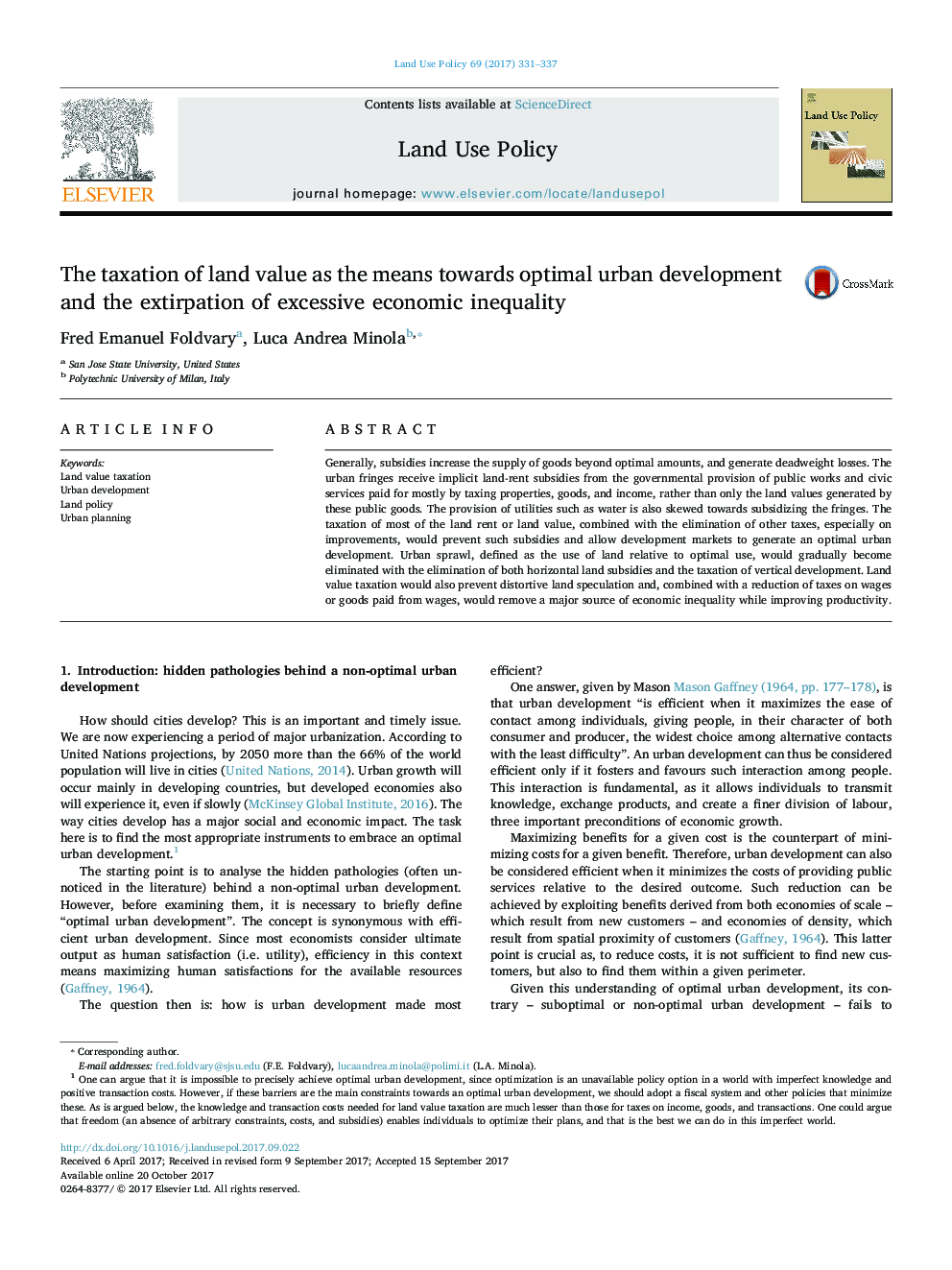| Article ID | Journal | Published Year | Pages | File Type |
|---|---|---|---|---|
| 6460387 | Land Use Policy | 2017 | 7 Pages |
Generally, subsidies increase the supply of goods beyond optimal amounts, and generate deadweight losses. The urban fringes receive implicit land-rent subsidies from the governmental provision of public works and civic services paid for mostly by taxing properties, goods, and income, rather than only the land values generated by these public goods. The provision of utilities such as water is also skewed towards subsidizing the fringes. The taxation of most of the land rent or land value, combined with the elimination of other taxes, especially on improvements, would prevent such subsidies and allow development markets to generate an optimal urban development. Urban sprawl, defined as the use of land relative to optimal use, would gradually become eliminated with the elimination of both horizontal land subsidies and the taxation of vertical development. Land value taxation would also prevent distortive land speculation and, combined with a reduction of taxes on wages or goods paid from wages, would remove a major source of economic inequality while improving productivity.
